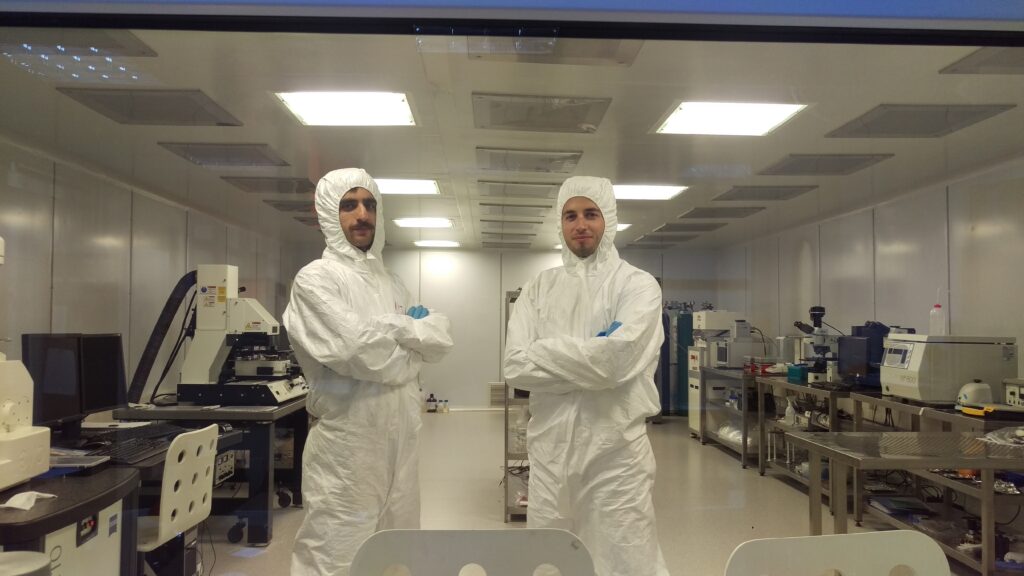Abstract
A microchannel (1) having a spiral geometry structured with asymmetrical curls (2) that enables separation of metastasis cancer cells rarely found in blood from the blood cells and enrichment thereof, which forces the particles or the cells to focus quicker and where high-quality particle focusing in a wider flow rate range can be performed.
Technical Field
The invention relates to a microchannel having a spiral geometry structured with asymmetrical curls that enables separation of metastasis cancer cells that are rare in blood from the blood cells and enrichment thereof.
More specifically, the invention relates to a microchannel having a spiral geometry structured with asymmetrical curls that forces the particles or the cells to focus quicker and where high-quality particle focusing in a wider flow rate range can be performed.
Background
hanks to the nanotechnology achieved today, important problems in many fields such as physics, chemistry, and medicine can be solved by nanometer sized structures. One example of such structures is microchannels. Inside these channels where microfluidic technology is used and that are especially used in medicine and having μm sized radius, tens of cells can be placed individually and the medium around them can be changed and the effects of such change can be inspected or the force they apply to their surroundings can be measured and calculated.
In this technique, various microchannel systems have been developed.
In the United States patent document with application No US2009014360A1 of the known state of the art, different methods and devices are mentioned which enable focusing of molecules in desired direction along with a moving fluid into the plurality of the flow streams or microchannels with known positions. The molecules can be conveyed to the channels inside one or more microchannels as desired by the internal force provided by the fluid passing through said flow streams or microchannels having a pumping part. Also, it is mentioned that the microchannels connected to said pumping part are curled at desired diameters in an asymmetrical geometry and therefore the molecules in the fluid can be directed within the scope of desired parameters.
In the international patent document with application No WO2014046621A1 of the current state of the art, a sloped and continuous microfluidics device having one input is mentioned. In said document, it is mentioned that this microchannel can be configured as straight and curled or as a spiral.
In the Chinese patent document with application No CN105462834A, a microfluidic chip designed in spiral geometry with an input and output at its ends, manufactured to catch the tumor cells is mentioned.
However, in the microchannel systems comprised in the known state of the art, the cells must catch a certain flow rate and passed through a longer distance inside the channel in order to have a good focus. In this case, the cells with low strength against external mechanical effects cannot be used in microchannel systems due to the negative effects of the shear stress created by high flow rates. Moreover, the reliability of laboratory studies performed on cells obtained by separation through microchannels becomes suspected since the physiologic properties of the cells along with the vitality are changed by the external mechanical effects such as shear stresses.
In order to overcome the problems mentioned above, there exists a need for developing a microchannel having a spiral geometry structured with asymmetrical curls.
Summary
he object of the invention is to embody a microchannel having spiral geometry, structured with asymmetrical curls where high quality particle focusing in a wide flow rate range is performed.
Another object of the invention is to embody a microchannel having a spiral geometry structured with asymmetrical curls that forces particles or cells to focus quicker.
nother object of the invention is to realize a microchannel having a spiral geometry structured with asymmetrical curls where the cells with low resistance against mechanical effects can be gathered inside the microchannel without being damaged.
Another object of the invention is to realize a microchannel having a spiral geometry structured with asymmetrical curls that shortens the diagnosis time.
The present cell mixture is pumped into the single entry point along with a fluid into the microchannel having spiral geometry (sunflower) structured with asymmetrical curls. While this cell-carrying fluid is circulating inside the microchannel having spiral geometry structured with asymmetrical curls, the deformable cells having different size and densities go to different points inside the channel due to resistance and drag forces created by the geometry of the microchannel. The cell groups formed after this process are taken to different exits at the end of the channel and they can be collected from these exits for examination. Thanks to the geometrical advantages of the microchannel of the invention, it does not require a membrane that can filter cells or external forces such as electrical, magnetic and acoustical forces and therefore the separation techniques can be performed passively.




